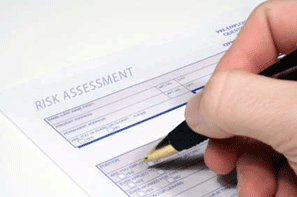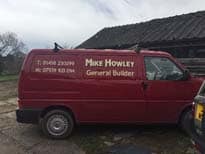10 Common Risk Assessment Mistakes Many Companies Make
Many of the HSE cases I include in these newsletters show that the companies involved have failed to carry out appropriate risk assessments.
Indeed, both cases listed today show a failure to properly carry out risk assessments as being the main management failings that led to the incidents.
So this week I thought that I would look at the 10 most common mistakes companies make with risk assessments
This week’s 2 recent HSE cases look at accidents where there was a lack of H&S management.
- Southern Health NHS Foundation Trust has been fined £2m after a series of management failings led to the deaths of two vulnerable patients at different facilities owned by the Trust.
- A community housing association has today been sentenced after it failed to effectively manage its employees’ exposure to Hand Arm Vibration Syndrome (HAVS) over a prolonged period of time
As ever, if you have a subject that you would like us to cover one week, please contact us by phone 01458 253682, email or via our Facebook page or by Twitter.
10 Common Risk Assessment Mistakes Many Companies Make
The incident above has had far-reaching effects on the victims, their families and the companies involved, and it will be some time until we know the reason for the collapse.
Take action now to control the risks from your work activities and those of any contractors working on site to ensure that you don’t have a similar disaster at your place of work.
Risk assessments should sit at the heart of your safety management system (SMS), yet many organisations blunder when it comes to this core requirement. What are the most common mistakes they make and how can you avoid falling into the same traps?
Mistake 1: Treating ‘Filling in the Form’ as the Risk Assessment
Where risk assessments are required, and you employ five or more people, you are legally required to record your assessment. Very quickly though this leads to a mindset that the most important thing is the form, correctly filled out.
Nothing could be further from the truth. The key to a good risk assessment is to make an informed systematic judgement about potential hazards and whether you have the right precautions in place to reduce risks to the minimum.
The form is just the record that you’ve done this.
My Advice: See risk assessment as the process of deciding the right precautions. The form is just the reflection of that, in the same way that your financial accounts record and reflect what happens in your business.
Mistake 2: Leaving Out High-risk Support Activities
Most organisations cover in greatest detail the operations they regard as most fundamental: for example, production in a factory or construction on a building site. It’s very easy to leave out vital support activities such as transport, warehousing and maintenance. But since these involve hazards such as work at height and being hit by a vehicle, they could actually be the highest risks.
My Advice: Devote the greatest attention and depth to your greatest risks; these will not necessarily be the same as your ‘core activities’. Do consider contractors, visitors and members of the public; your assessment must cover anyone who’s affected − not just your employees.
Mistake 3: Not Recognising and Acting on all the Legal Requirements
There are some assessments all organisations will need, for example, a general risk assessment to comply with Regulation 3 of the Management of Health and Safety at Work Regulations 1999 and a fire risk assessment to comply with article 9 of the Regulatory Reform (Fire Safety) Order 2005.
But other requirements come into play if you carry out work that’s covered by the relevant regulations. So for example, if you work with lead, you’ll need to carry out a risk assessment under the Control of Lead at Work Regulations.
My Advice: Make sure you have identified all the risk assessment requirements that apply to you and that you have them covered. But you don’t need to waste time producing a separate document for each set of legislation.
Mistake 4: Only Considering ‘Normal’ Operation
Assessments often assume everything’s operating as it should. But life’s not like that: even in the best run organisations, machinery sometimes jams, chemicals get spilled and things catch fire. You need to consider these eventualities. This is because the requirement is to consider all foreseeable risks, not just those of normal operation. Also, dealing with these can be high risk, and in the pressure of the moment, it’s all too easy for people to put themselves in danger − and their colleagues.
My Advice: Involve your employees in the risk assessment. They (better than anyone else) can tell you what can go wrong as well as what happens when everything is running smoothly. Ensure procedures cover night shifts and weekends when fewer people may be available to help in emergency
Mistake 5: Not Keeping Assessments Up to Date
All legal requirements for risk assessment contain a wording requiring you to ‘review’ so that assessments are kept up to date, meaningful and relevant. While these don’t stipulate a specific time scale, here are some pointers:
- The main thing that makes risk assessments go out of date is changes. So if you bring in new plant or equipment, a new process, new chemicals or in any way change what people do and how they do it, you should check your risk assessment to see if it needs updating. Also, new regulations, approved codes or guidance should prompt a review. For example, do you need to update your assessment of vehicle risk in the light of the new HSE guidelines on workplace transport?
- Some insurers do not regard risk assessments as up to date unless they have at least been checked and then re-issued within the last two years.
- It’s good practice to put a review date on each assessment, perhaps two years after the date of the original and to then set up a flag system so that the assessment document is looked at by the due date. If inspectors or auditors check your risk assessments, expect them to ask: ‘when did you do this, and when did you last do a review?’ If your assessments were done in September 2012 and you specified a review date of September 2014, but there’s now no evidence of review,that’s a non-conformance straightaway.
My Advice: Review and revise. It’s legally required and it’s the only way to make sure your assessments remain effective.
Mistake 6: Not Telling the Workforce
Many organisations assess, but then fail to tell workers their findings. It’s good practice to involve your workers in the assessment process, but even if you don’t, it’s a legal requirement to inform them of the outcomes: what hazards have you identified and what action do they need to take to keep themselves safe? Be ready for an inspector or auditor to ask for an assessment and then check a sample of affected workers to see what they know about it.
My Advice: No matter how good your documentation is, you’ll be faulted if the forms are sitting in a folder in the supervisor’s office − but your employees know nothing about them. So share this information with your workers; they need to know your findings so that they can act on them
Mistake 7: Focusing on Safety but Forgetting Health
It’s all too easy to target possible accidents (safety) in your assessments and leave out the other key consideration: health. Compared to accidents, work-related health problems cause far more absence, lost time, and about 30 times more premature deaths. But harm to health tends to be long term (chronic), slow in onset and perhaps undetectable until the damage has already been done. And, let’s be honest, when compared with safety issues, health hazards are harder to assess, often requiring expert advice and special measuring equipment.
My Advice: Check your assessments cover health risks (e.g. harm from dust and other materials, back injury from poor lifting/handling techniques) as well as more obvious safety hazards.
Mistake 8: Unthinking Use of Off-the-shelf Assessments.
It’s fine to use off-the-shelf assessments, otherwise the HSE wouldn’t include them on its website. But there is one proviso: they won’t be valid in every situation, so check that they meet your needs. If they include hazards that are not relevant to you, delete these sections or you’ll undermine your assessment’s credibility and relevance. More importantly, check whether you need to add in something that’s specific to your own situation, for example, a hazard particular to your site or way of working that’s not mentioned in the generic assessment.
My Advice: Aim to have the right precautions in place to protect your employees, not a form that has all the boxes nicely filled in. If the assessment’s not directly relevant to you, your employees won’t pay attention to it and it cannot be effective.
Mistake 9: Gold-plated Assessments for Work by Contractors.
It’s now common for clients to ask contractors and other service providers for copies of risk assessments. The contractors sometimes ‘gold plate’ these (specify a very high standard of precaution), believing that this is what the customer is looking for and that it will show the contractor in a good light. Often, these precautions don’t get implemented in practice, and sometimes the people actually doing the work don’t even know what was written into the risk assessment, let alone implement it.
My Advice: If you are a contractor, don’t put precautions in your risk assessment unless you intend to take them; if you are a customer/client, hold your contractors/service providers to account for delivering the promised precautions. If the risk assessment and what’s done in practice do not line up, ask why.
Mistake 10: Not Acting on Your Own Recommendations.
This is a major one. All risk assessments should draw conclusions about the adequacy of safeguards; that means just two possible outcomes:
- control is OK so we just need to maintain our current precautions; or
- our precautions need improving.
Either way, action is required, even if it’s just to make sure what you’re already doing remains effective.
So do you have assessments containing recommendations that no one has ever taken the trouble or found a way to implement? If so, they are a ready-made negligence claim against you should someone later be hurt. You can predict what the injured person’s lawyer will say in court: ‘So, m’lud, did my client’s employers take the precautions that are customary in their sector? Indeed they did not; in fact, they didn’t even follow their own recommendations, as set out in the risk assessment they themselves wrote. I therefore submit they were negligent and that substantial compensation is due.’
My Advice: Act on every recommendation and check it has been effective. If it hasn’t worked, try something else. Don’t let actions sit in the ‘too difficult ‘pile. A recommendation that appears in an official company document (but which no one has acted on) is a liability time bomb.
We are pleased to announce that the office extension (Phase 1) has been completed.
Our thanks to Mike Howley General Builder for a job well done. If you are looking for a good builder who gives you a quality job at a sensible price, we strongly recommend Mike.
They were a pleasure to have on site, worked quickly, safely and cleaned up the site at the end of each day.
We look forward to Phase 2 in the next few weeks!
Taunton & Somerset CPD Group at The Exchange House Taunton
Please remember that we now run these CPD events at the Exchange House, 12 – 14 The Crescent, Taunton TA1 4EB.
The next of the CPD events is listed below.
As previously requested, if you could let us know whether or not you can attend it would be greatly appreciated. Also, if you would like to give a talk, or know of somebody who would, please contact Jon at [email protected]
Our next Seminar will be on 11th April 2018. Could you please arrive by 12:30pm prompt.
Our speaker for this one is Amwell Systems Ltd with their recently updated RIBA approved CPD Innovation in Flush Fronted Washrooms.
If you haven’t already booked your place, or if you are not on the CPD Seminar mailing list but would like to be please drop Jon an email and he will deal with your request.
As per our last one if you could let Jon know whether or not you can attend within 7 days of receipt of his email, it would be greatly appreciated.
Contact Details [email protected] 07831 714199 or 01458 253682.




